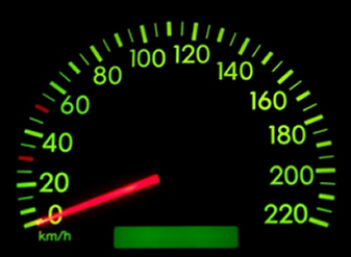If there were a 'like' button for investments, we would hit it.
Investments help your money grow faster than when it's in a bank account and help you reach your financial goals more quickly, too.
But the money you make off of investments (which is called capital gains) counts as income in the government's eyes, and that means you'll be taxed on it.
In this post, we'll cover what the typical investor needs to know during tax time. We won't be covering complex financial instruments like futures, short selling or derivatives, but if you have a retirement account and/or a basic investment account with stocks, mutual funds or bonds, then we've got you covered.
What You Need to Prepare Your Tax Return
By now, you should have received a tax package from your brokerage, which includes things like your 1099-DIV and your 1099-B. This tells you all the information you need to know in order to do your taxes. If you did not receive it or lost it (it happens), you can go log in to your brokerage account and find a digital copy or call up and request it.
The 1099-DIV form will list your capital gains, dividends, interest and capital gains distributions, so you can fill them out on the appropriate place on your 1040. For simple investment accounts, you don't even need to know what these terms mean, just match them up and write down (or type in) the number.
If You Sold Any Investments
If you sold your stocks for more than they were worth when you bought them, this is called a capital gain and it will be reported on your 1099-B, included in your tax packet from your broker. Your capital gain equals what you sold it for, minus the price you paid for the investment (the 'cost basis'). So if you bought 10 shares of stock at $10, and sold them for $20, you made $100 in capital gains ($200 - $100). This capital gain is taxed, and you report it within the income portion of your 1040, where it says 'capital gains.'
How Long Did You Hold Them?
The government wants to encourage Americans to invest for the long haul (which is what we recommend as well!). If you bought an investment like mutual fund shares, stocks or bonds and sold them less than a year later, that means they qualify as a short-term capital gain, and your profit will be taxed at a normal rate of up to 35%.
[InvestingAnswers Feature: The Lazy Man's Retirement Portfolio]
But if you kept your investment for more than a year before selling, that means your profit is a long-term capital gain and will be taxed at a much lower rate of no more than 15%.
Moral of the story: Hold your investments for more than a year if possible.
What if You Lost Money?
When you sell an investment for less than you bought it, that's called a capital loss. But the IRS can ease the hurt just a little bit.
If you made a profit on some stocks you sold, and a loss on some others, you can claim your losses against the capital gains to pay lower taxes. For example, if you made a capital gain of $50 on stock A, and a capital loss of $35 on stock C, you will be taxed on only $15 of capital gains ($50 - $35). If your losses are more than your gains, you can claim up to $3,000 in losses against your other income, like your wages from work.
Moral of the story: If you posted a loss on some of your investments, make sure to claim it on your return.
A Trick to Save on Taxes
It's too late to use this trick now, but perhaps it will be useful for you for next year.
Many investors will look at their investments at the end of the year in December and cull out losers that they don't want in their portfolio anymore. For example, if you have some shares of Bankrupt Company stock, December is as good a time as any to sell them and take the loss that you would have anyway. Then you can use those losses to offset your other capital gains or income.
To keep investors from gaming the system, however, the IRS has what is called a 'wash sale' rule. That means if you buy back the shares within 30 days, you cannot claim those losses on your return. So only sell an investment to save money on taxes if you don't think it will go back up and you don't want it in your portfolio anymore.
Moral of the story: Sell poorly performing stocks you no longer want before the end of the year to save money on taxes.
Benefits of Tax-Free Accounts like 401(k)s and IRAs
If you're saving up for retirement, there's a reason we tell you to put it in a special account for that purpose. It's because you won't be taxed on those investments until you take the money out, many years from now.
What that means is that if you make $50,000 this year from your job and move $5,000 of it to your 401(k), then you will only be taxed on $45,000, saving you money overall. But if you invested that money in a regular brokerage account, you would be taxed right away on it and then again when you sell the investments and make a profit.
Some tax-advantaged investment accounts include:
- 401(k)s
- IRAs and Roth IRAs
- Health Savings Accounts (HSA)
- 529 college saving plans (Though donors' contributions are not deductable at the federal level)
Moral of the story: Put as much as you can into tax-free investment accounts before you put any money into regular investment accounts.
If you Own Mutual Funds
Mutual funds are investments that bundle together a group of stocks and offer shares to investors as a simple way to diversify your portfolio. While mutual fund managers do buy and sell stocks inside the fund every day, don't worry -- you don't need to account for these transactions. You only need to worry about two things: when you sell mutual fund shares (which you treat just like selling stocks) and your dividends.
You can choose to keep your dividends, which will be taxed like income, or you can choose to reinvest them. Reinvesting your dividends means you use the dividend money you receive from your mutual fund to immediately buy more shares. This has advantages, but it makes finding your cost basis, and thus your capital gains, much more complicated.
Brokerage firms must provide accurate and easy-to-read cost basis information for 'covered securities' with form 1099-B at the end of the year. If that is the case, you can probably handle the tax reporting yourself. If yours doesn't, and you reinvest your dividends in a 'non-covered' security, it's worth hiring an accountant to prepare your taxes for you. You will tear your hair out first deciding which method to use to calculate your capital gains, and then doing all the math. You don't want that.
Moral of the story: If you reinvest your dividends and hate doing math, consider getting an accountant.
If You Own Bonds
Bonds generate income in the form of interest. To report the interest, fill out a schedule B form and attach it to your 1040. Here's how interest is treated on bonds:
U.S. Treasury Issues: You pay federal tax on interest, but no state or local income taxes.
Municipal Bonds: You pay no taxes on 'munis' if you buy them in the state where you live, so they are free of state, federal and local taxes, which is why they call them 'triple free.'
Corporate Bonds: You pay taxes on the interest.
Zero Coupon Bonds: While you don't receive interest on these bonds until maturity, the IRS computes the annual interest you would earn and taxes you on it.



